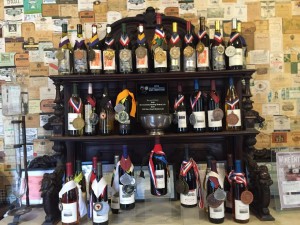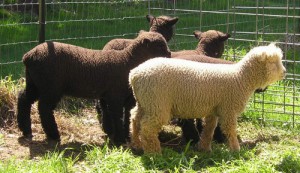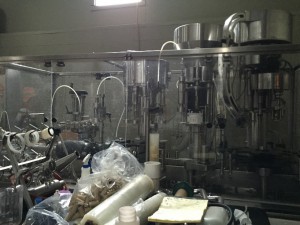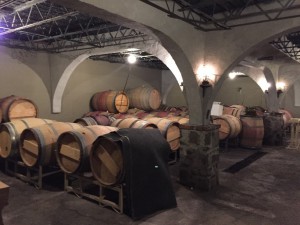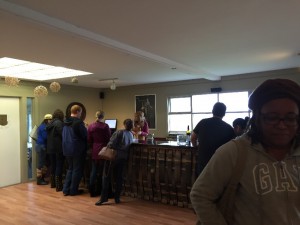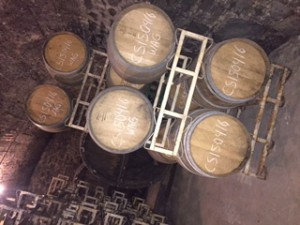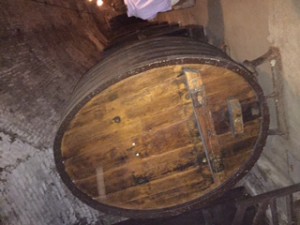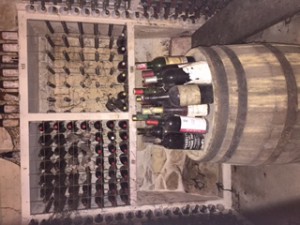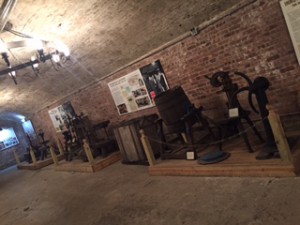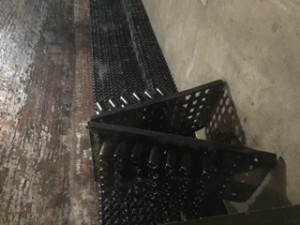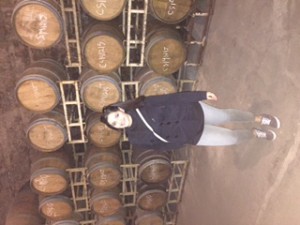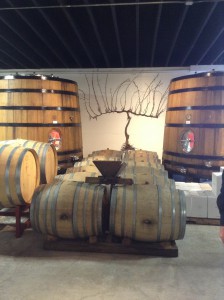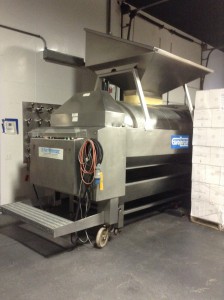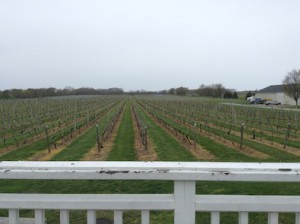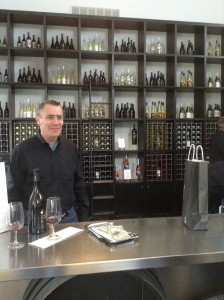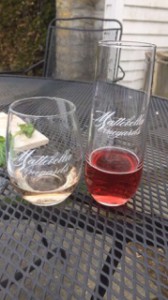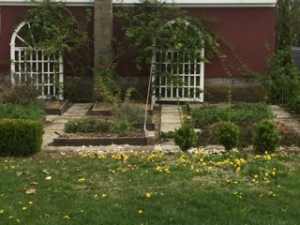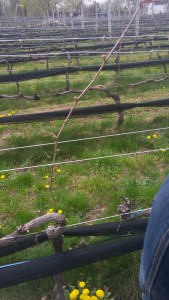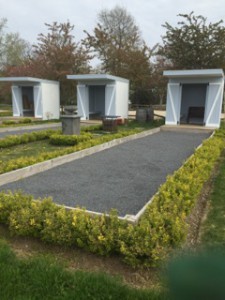On May 1, I visited the Benmarl Winery, located in 156 Highland Ave, Marlboro, NY, part of the Lake Erie AVA. Unfortunately, it was a very rain day but this was an outing planned to included visitors from Antigua. It took a longer than anticipated and it ended up being a day trip but despite the rain, we had a great time, including the 85 yr. old grandma, even though she didn’t taste any wine.
Benmarl Winery is a 37 acre estate that overlooks the historic Hudson River Valley, it is 37 acre estate. It lays claim to being the oldest vineyard in America. The winery also holds New York Farm Winery license No. 1. It is one of the premier wineries in the region and is committed to quality and consistency. Their focus is on hand crafting wine in small batches. Victor Spaccarelli Jr., Proprietor says “we strive to allow our wines to speak of where they are from”.
In addition, to using our Riesling sourced on Seneca Lake, and Merlot from the north fork of Long Island grapes, Benmarl grows Baco Noir and Cabernet Franc grapes.
Baco Noir known as Baco, a red grape from Hudson Valley is a hybrid between French and American grape varieties. It is a crossbreeding between the Folle Blanche, a cognac grape from Armagnac Province, France and “Vitis Riperia or “riverside/bank” grape usually found river banks in the eastern part of North America from Southern Canada to the Rocky Mountains. It was bred in 1902 by Monsieur Baco and released commercially in 1910. Baco has deep red tones and high acidity or dryness. It has complex fruit flavors of black and choke cherries, blackberries, prunes, and plum fruit. Further, it can have herbal notes of black pepper, licorice, cinnamon, and eucalyptus and robust and aromatic flavor elements such as cedar, tobacco, leather, toasty oak, and chocolate. It ages very well to become becomes a complex, full-bodied wine. Food pairings ae red meats, barbecued meats or other heavy dishes. Baco makes a wide range of quality wines. It can be made into wines as diverse as Burgundian Pinot Noirs, Bordeaux like Cabernet Sauvignons, In addition, when made into a slightly lighter style the fruit notes become raspberries, black raspberries, blueberries, cherries, and strawberry jam and lavender, black pepper, mint and licorice are added to the herbal notes.
They just planted 2,000 vines of Cabernet Franc, which is related to the varietal Cabernet Sauvignon. Cabernet Franc originates from both Bordeaux and the Loire valley. It ripens early and is known for vary tannic wines, with red fruits flavors and notes of purple flowers, green herbs and pencil shavings or fresh cut lumber. They do not expect yields for another 8 years.
The soil at Benmarl is comprised mainly of loam and slate, which provides the perfect combination of fertility, nutrients, and irrigation. The nearby Hudson River serves a dual purpose. The flowing water keeps the climate temperate, and the valley serves as a conduit for maritime breezes from the south. The gently sloping hills provide ideal sites for vineyards. All of this makes a perfect environment for growing grapes for wine.
They prune the vines and cull leaves to protect the grapes. Because they make various types of wines, the grapes are handpicked at different stages. The first harvest is usually around September, and the last harvest used for their Ice Wine is around November.
I spoke to Matthew Spaccarelli, Winemaker and General Manager who also manages a vineyard in the Finger Lakes, and he said that with regards to agriculture, they are very focused on making the vineyard sustainable as part of the viticulture. He said “quality and consistency, but also on progression as the environment is consistently changing and global warming is creating new challenges as well as opening doors to opportunities that were never there before. One of the ways to combat weeds, they use Olde English “Babydoll” Southdown sheep, this breed of sheep, eats the weeds but are too short to reach the grapes.
In addition, to weeds, Benmarl often encounter botrytis, powdery mildew, and the Grape Berry Moth. They checked their crop constantly and use organic fungicides and pesticides when need. He stated, “It was very important to know your crop and when to use fungicides and not just to spray for spraying sake.” The Grape Berry Moth is their most problematic insect as it affects the entire cycle of the grape. According to http://www.extension.umn.edu/, adult moths emerge in mid to late May, mate, and lay eggs on or near grape flower clusters. Then Larvae hatch from eggs in 4-8 days and emergence of the overwintering generation peaks in mid-June and continues to mid-July. Larvae that hatch in June make up the first generation. Larvae feed on tender stems, blossom buds, and berries. Some larvae pupate in the fruit cluster where they have fed. First generation adults begin to fly in late July, and the flight peaks in early August, however, adult moths continue to emerge until early September. Second generation larvae usually enter where the berries touch each other or where the berry joins the stem, and tunnel directly into the green berries and feed internally. Conspicuous red spots develop on the berries at the point of larval entry, and are referred to as “stung” berries. Larvae of the second generation complete their development in late September and pupate in fallen leaves. In addition, larvae can be a contaminant or act as an entry point for diseases. Injured berries ripen prematurely, split open and shrivel. Webbing produced by larvae prevents the berries from dropping. When grape clusters are ready to be picked, severely infested clusters may contain several larvae Berry Moth.
In the tasting room, Katherine greeted us. At that, the room was empty and she came to us right away. I told her, why I was there, and she directed me to Ted as she was only there three weeks at that time. Ted, however, had worked in the vineyard, and in the processing of grapes for over 17 years. He was able to give me a lot of information about the harvest and the vines planted and where they got their other grapes. In the tasting area, you had a choice of 6 wines from 12 wines, however, the room quickly filled up and Ted had to divide his time, which allowed me to explain wine, and how the different fruit scents were not added fruit but from the type of grape and how the wine was made. Overhearing, Ted brought out the staff tasting notes, which lists, how the percentage of named grape, the fermentation period, the aging period and where it was aged (oak) or on lees and the percentage of Malolactic Fermentation. For example, the Chardonnay is 50% FO barrel; 50% Tank and 100% MF and ten months On Lees. He advised me to speak with Matthew and then he could give us a tour of the cellar.
Benmarl uses oak in part of their vinification process, mainly French and Hungarian Oak when aging wine. Benmarl also uses Musk Steel Tanks and Stainless steel tanks for their fermentation, in addition to Malolactic Fermentation to lower the acidity in some of their wines. MFA is done after primary fermentation is completed; you inoculate your wine with the lactic acid bacteria. It is important to prevent oxygen from coming into contact with your wine during this process as the bacteria only produce desirable results when they work anaerobically (without oxygen). This reason for this is to have stability, if not done before it could happen in the bottle and it reduces acidity. Although they do use some corks in their bottling they are transitioning to screw caps as it is proven cork does not affect the taste or quality of the wine. The press was located outside but it was too foggy to get a clear picture of the press.
Unlike some other places, most of the wines contained a 100% of the named grape. It may not however be from their vineyard but definitely from the area. Benmarl has received various prizes for their wines and in addition, there is a bed and breakfast and they do weddings.
I would visit this vineyard again, which I was unable to do because it was raining so heavily and cold, so I did not experience the entire tour, but I came away with a few bottles of their Ice Wine that I plan to consume as soon as I graduate.

